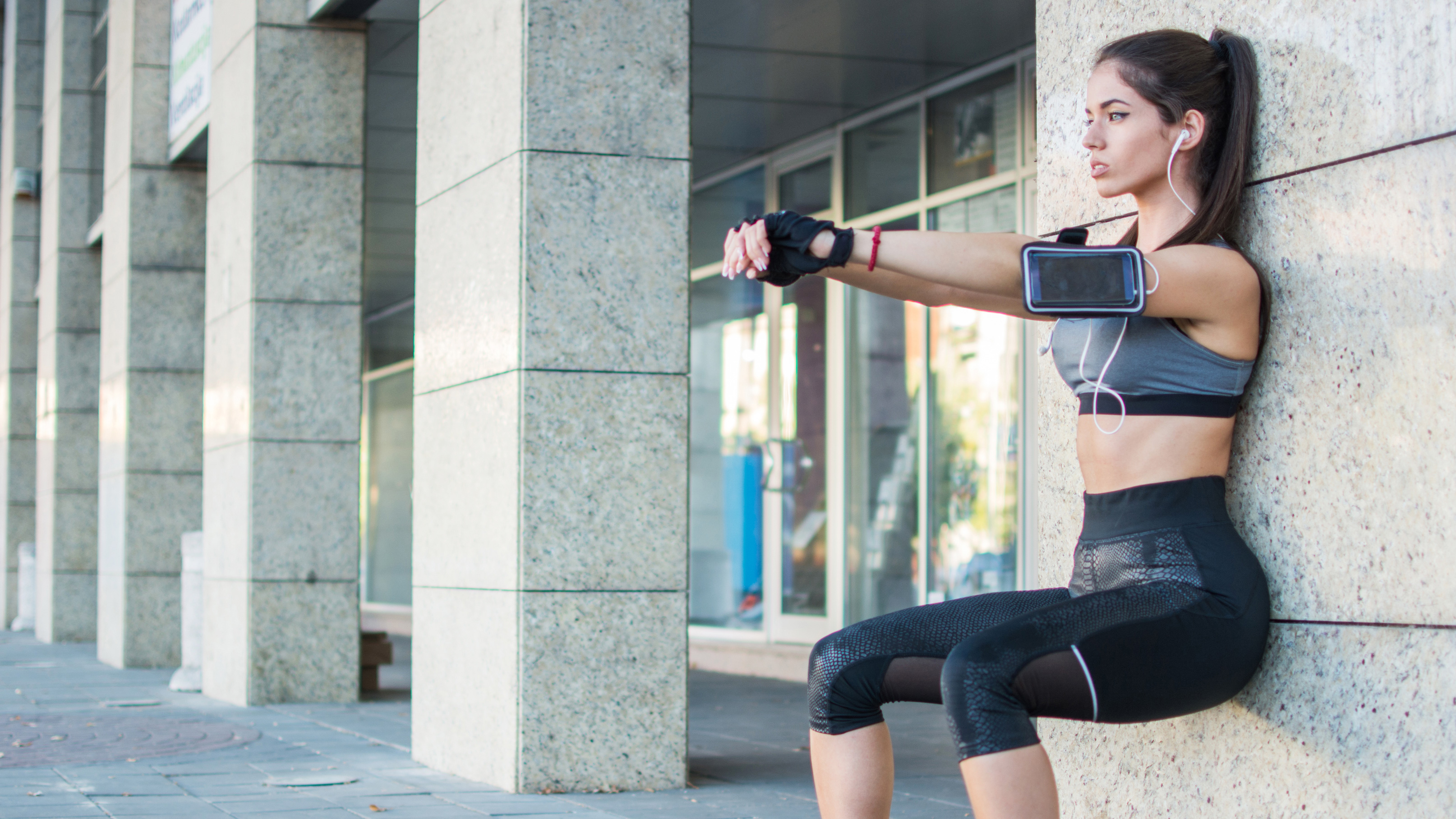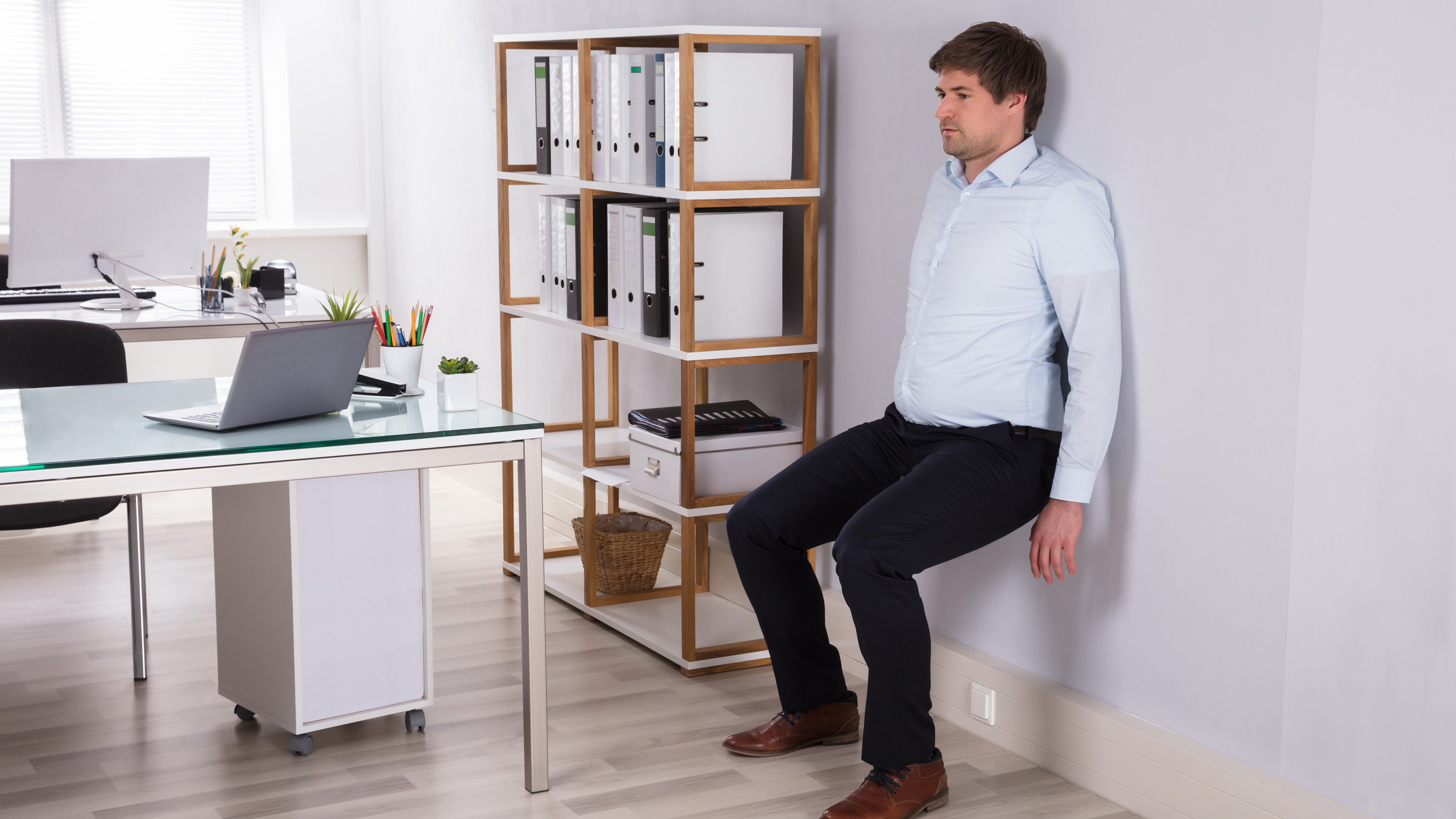One of the best exercises you can do for your legs and core is absolutely free, requires no equipment, and can be done while watching TV at home. What’s more, there’s no movement involved, you're not adding any extra weight, and there's no impact on your joints. This makes it perfect for beginner exercisers, seniors, and those with joint problems preventing them from doing other forms of exercise.
The wall sit is a great exercise, and very underrated in my book. People often use it in the lead-up to a skiing holiday, as it prepares your legs and glutes to adopt that crouching posture. I made great use of it during COVID, when all the gyms were closed and I was getting bored repping out bodyweight squats, so I started doing a daily wall-sit challenge: four sets of one-minute holds every day for two weeks.
It ended up making my core and legs way stronger as a result, and although you don't have to do the full four minutes a day, as I did, a week of wall sits would make for a perfect way to kick off your Get Fit for '23 fitness journey.
Wall sits are part of a family of moves called "isometric" exercises. Isometric moves are workouts that don't involve any movement: instead, you hold challenging poses to induce tension in your muscles. For example, you might hold a plank position to train your abs. In one study published in the International Journal of Sports Medicine, isometric exercises like this were found to be beneficial in improving muscle strength in people with limited mobility, perhaps even more so than traditional “dynamic” strength training.
Because it doesn’t involve your knees and hips moving at all, has no need to add extra weight onto your back, and doesn’t involve your feet impacting the floor in the way running or jumping exercises might, it’s incredibly forgiving and a great way to get started. However, it's still a tough workout, and although you might not be racking up any steps on your best fitness tracker, you'll probably still be able to see your heart rate spike after a few sets.
To get started, simply lean your back against a wall and slide down. Your feet should be out in front of you, shoulder-width apart, and your thighs should be parallel to the floor. Keep your shoulders touching the wall, and look straight ahead. The TV makes an excellent focal point (and a welcome distraction).

Now, here’s the tricky bit: you have to hold the position for a specific amount of time. If you’ve never tried this before, or are very new to strength training, 15-30 seconds might be an achievable goal for you. Once you get into this position, it’s quite fiddly to play with your phone and get the timer set up, so I just used the Amazon Echo Dot in my living room to ask Alexa to set a one-minute timer. Then you just hold the position for the required amount of time.
Easier said than done. Very quickly, your quads, glutes, and hamstrings are going to light up. For an added benefit, make sure you’re looking straight ahead, put your hands behind your head or extend them out in front of you, suck in your stomach slightly, and tense your abdominal muscles.
I’m not going to lie to you, it sucks. Every time I heard Alexa’s dulcet tones say “okay, one minute, starting now,” I found myself gritting my teeth in anticipation of the tough time ahead of me. The soft alarm sound at the end of that minute was a lifeline, but it felt like it took forever to get there. It had gotten to the point where I began to dislike Alexa’s voice, because I associated it with those gritty wall sits.
However, it’s still far more effective than fiddling with a timer and hurrying to assume the position, and any little hack that removes a barrier to exercise, no matter how small, is a win in my book. I found it's much easier to set timers with a simple voice command.

Once I was back in the gym, I found I hadn’t lost much strength in my legs and glute even after my long absence from the squat rack. All those wall sits also augmented my running: research published in the journal Medicine & Science in Sports & Exercise suggests stronger glutes and quads are a factor in top running speed. A strong core helps maintain good running posture too.
Whether it was a coincidence or not, I hit a personal half-marathon best after training with this unconventional, underrated method at home. Now I'm training for a full marathon, which takes place in April 2023, I'll be adding the wall-sit back into my regular fitness routine.
If you’re ever thinking you should really be doing some exercise while watching Netflix at home, try three sets of 30-second wall sits to get you started. Just don’t blame me if you begin to resent your smart speaker afterward.
First published: May 2022.
from TechRadar - All the latest technology news https://ift.tt/COQc4Jg

0 coment�rios: